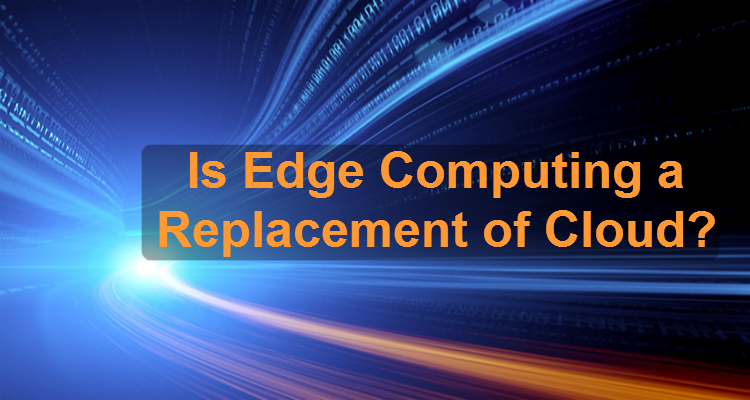Edge computing will not kill or replace cloud computing, rather it will be an extension of it. The IoT( Internet of Things) is a real event. It is a real part of the cloud computing scenario. Internet of Things (IoT) is an ecosystem of connected physical objects that are accessible through the internet. The ‘thing’ in IoT could be a person with a heart monitor or an automobile with built-in-sensors, i.e. objects that have been assigned an IP address and have the ability to collect and transfer data over a network without manual assistance or intervention. The implanted innovation in the object helps them to connect with inside states or the outer condition, which thusly influences the choices taken. The key challenge faced by the users is the way of achieving data processing from the myriad of devices that are available. Cisco Systems predicts that the cloud traffic might observe a rise to nearly four folds by the time of 2020. The probability of increasing rate is 3.9 ZB (zettabytes) per year. This figure can reach up to 14.1 ZB (zettabytes)by the year of 2020. IoT is all about the processing of the data that is device generated and yet tends to be meaningful. At the same time, cloud computing is by utilizing the data which is stored on centralized storage and computing. It is said that the rapid growth rate of cloud computing and Internet of Things (IoT) would become unmanageable in future. So, what's the solution of this unmanageability? The answer is 'Edge Computing'. Edge computing pushes data processing out to the edge of the network, close to the source of the data. Further, it is just dividing process among edge and centralized system, which means an open cloud, for example, Amazon Web Services, Google Cloud or Microsoft Azure. The concept of edge computing might resemble like client-server architecture. Client-Server design alludes to the engineering of a PC network in which numerous customers (remote processors) ask for and gets from a brought together server (have PC). The goal is to process near the device that the system would be needed quickly, such that proper action is taken instantly. There are several use cases in which the reaction time is the significant value point of the entire IoT system. These use cases are also used for sending the data back to a centralized cloud in a consistent manner such that it would prevent the particular value from happening. This doesn't mean that edge computing will blow up cloud computing. Rather it may complement cloud computing. The reason of bringing data computation back to the edge falls down to increasing data volumes, which leads to slow networking. The core reason for this is latency. Therefore, it makes sense to put data close to a device to eliminate latency. But this doesn't mean you don't require cloud now! The cloud can still be used to deliver certain services too, such as media and entertainment. It can also be used to back up data and to share data emerging from a vehicle for analysis by a number of various stakeholders. Cloud computing and edge computing are two different concepts. There is no way that one can replace another. To conclude, I would share a thought of one commentator who responded on Quora about the difference between edge computing and cloud computing that “edge computing is a method of accelerating and improving the performance of cloud computing for mobile users.” So, the argument that edge computing will replace cloud computing doesn't even stand. Yes, they will surely support each other.

